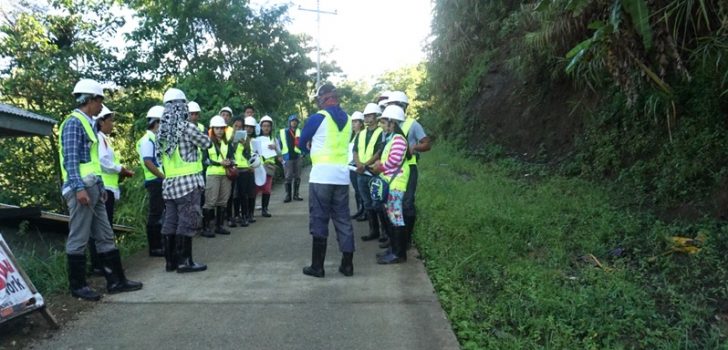
PRDP pushes for citizens’ involvement in monitoring infra projects
Geared towards increasing transparency in the implementation of Philippine Rural Development Project (PRDP) interventions, citizens are now being involved in the monitoring of rural infrastructure subprojects.
To ensure that the road project in Ifugao will progress in accordance with the prescribed designs and standards, local officials of the barangays covered by the Improvement of Pula-Cawayan-Camandag Farm-to-Market Road (FMR) in Asipulo were trained on the involvement of citizens in the monitoring of rural infrastructure subprojects on June 26-28, 2018. The training was also joined by representatives from the provincial and municipal LGUs.
Charlemagne Monayao, Agricultural Program Coordination Officer (APCO) for Ifugao said, in his message, that the concreting of the road to barangay Camandag will surely bring development to the people residing within the area. “There may be concerns in the implementation of the FMR project, but as main users, you should involve yourselves in the monitoring to ensure that it is being implemented properly,” he added.
Engr. Jovel Dizon, Monitoring and Evaluation Officer of the PRDP Project Support Office (PSO) explained that the participants will be trained on how to properly monitor the implementation of the FMR subproject using monitoring tools developed for the PRDP. This includes the Citizens Monitoring Instrument and the Applied Geotagging Technology (AGT).
Before going through the monitoring instrument, the participants were trained on AGT and the importance of geotagging. After which, Engr. Frederick Agasen, Rural Infrastructure Engineer of the National Project Coordination Office (NPCO) discussed the minimum quality assurance indicators and the processes for quality control and monitoring to ensure durability of infrastructure subprojects.
The Social and Environmental Safeguards (SES) portion of the monitoring instrument was also discussed. For. Emmanuel Aragones, PSO SES Unit Head explained the integration of safeguards in the whole project cycle and the environmental and social issues of construction.
After the lecture session, the participants proceeded with the field testing of the monitoring instrument and had a hands-on application of the PRDP camera that is used for geotagging. Later on, each barangay convened for synthesis and presented their outputs and action plans for the sustainability of citizens’ monitoring. Should there be any complaint regarding the works and activities of the contractor, they were advised to coordinate first with the PRDP assigned Rural Infrastructure Engineer in the region.
Meanwhile, the participants expressed their gratefulness for the conduct of the training despite the current status of the FMR subproject.
“I became an engineer for a short period of time,” said Gladys Dadi from barangay Pula as she expressed how she felt during the training, adding that they have learned a lot about proper construction activities.
Aside from increasing transparency in the implementation of PRDP interventions, it will boost the citizens’ ownership to the process of implementation. ### (Elvy Taquio, DA-PRDP RPCO-CAR InfoACE Unit)
